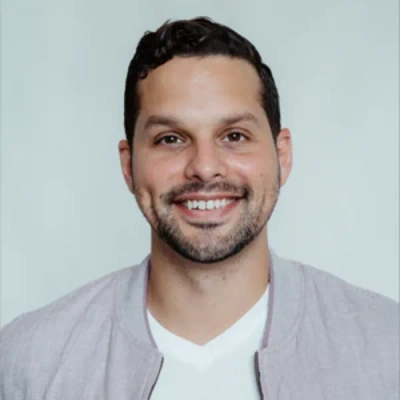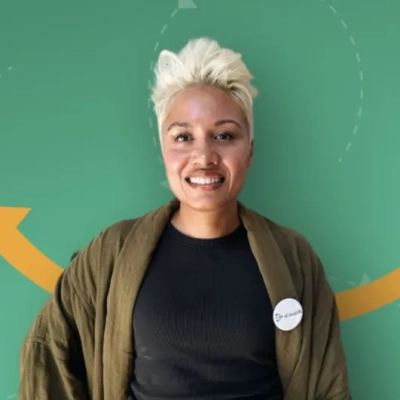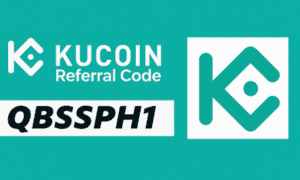18 Creative Project Assignments for Employee Growth in Small Businesses
Small businesses looking to develop their workforce don’t need expensive training programs — they need smart project assignments that push employees beyond their comfort zones. This article brings together insights from business leaders and growth experts who have successfully used creative assignments to build stronger, more capable teams. From mini-business challenges to cross-functional missions, these 18 strategies offer practical ways to unlock employee potential while driving real business results.
- Assign First-Time Leadership Projects Early
- Delegate Process Projects With Zero Instructions
- Create Quarterly Stretch Sprints for Growth
- Form Stretch Pods Around Business Problems
- Pair People With Complementary Development Needs
- Connect Associates With Cross-Departmental Research
- Treat R&D Like an Open Sandbox
- Run Internal Hackathons as Development Tools
- Assign Cross-Functional Growth Missions During Sprints
- Match Automation Tasks With Hidden Talent
- Align Teammates With Investigation Projects
- Grant Control Over Smaller Problem-Solving Tasks
- Guide Juniors Through Client Project Leadership
- Transform Staff Into Mini-CEOs for Initiatives
- Invite Junior Members to Lead Onboarding
- Use Cross-Disciplinary Micro Projects Strategically
- Present Projects With Micro-Ownership Opportunities
- Give Employees a Mini-Business Challenge
Assign First-Time Leadership Projects Early
One creative approach we use is assigning “first-time leadership projects” to team members as a way to accelerate their development. Instead of waiting for someone to be fully trained before giving them higher-level work, we flip it. We give them ownership of a real customer project first and surround them with the guardrails, templates, coaching, and review that allow them to succeed.
A recent example: a small business needed help building a forward-looking budget to understand what they could pay themselves in 2026. They needed a model that showed how pricing, volume, and labor costs flow through the business so they could see what level of salary the company could actually support. One of our team members had never built this type of model before, so we assigned her as project lead and paired her with leadership for structured support.
The result was a win on all sides. The customer got a clear financial roadmap, our company delivered a higher-value advisory service, and our employee gained a new strategic skillset she can now apply across our customer base. Giving someone full ownership with a safety net has become one of the strongest development tools in our small business.

Delegate Process Projects With Zero Instructions
I take non-urgent process projects with room to improve (slow quote follow-ups, email bounce rate, drop-off in app submissions, etc.) and delegate them to team members outside of the job function with one rule: zero instructions. I give them access to the stack, some base numbers, a deadline, and that’s it. What ensues is magic — humans dive in and learn how the company actually works, not how it’s supposed to on paper. An ops assistant rebuilt our intake process in a no-code form builder and reduced lead-to-response time from 36 hours to 3. That freed up $200K in deals we used to lose because prospects “fell out of scope” while waiting.
The best part is they leave having won. They own a result, not a task. That’s how it’s different from the typical checklist or formal training, both of which only teach repetition. Allowing humans to fail, solve it, and own the result creates people who think and act like owners. And if you do that with a 6-person team, you start delivering on par with a 20-person firm without adding a hire. That’s how you scale without paying for “culture” decks.

Create Quarterly Stretch Sprints for Growth
One of the most effective ways we’ve used project assignments for development is by creating what we call “stretch sprints.” Every quarter, we give one team member ownership of a small but high-impact project outside their usual role — something that forces them to learn fast, collaborate cross-functionally, and present outcomes to leadership. It’s structured like a mini startup within the company.
One designer, for example, led a sprint to improve our internal onboarding flow. She learned about user research, data tracking, and workflow automation — things she’d never touched before. The result led to a smoother onboarding process for new hires and a designer who now thinks like a product manager.
It’s been a win-win because employees grow through real ownership, and the company uncovers new talent and fresh perspectives without sending people to expensive training programs.

Form Stretch Pods Around Business Problems
One of the most meaningful ways I’ve used project assignments for professional growth was something we started early — we called it “stretch pods.”
Here’s how it worked: instead of assigning projects strictly by role, we’d form small, cross-functional teams around a problem that mattered to the business — say, improving onboarding automation or redesigning a customer dashboard. Each person, whether an engineer, designer, or operations lead, was given one stretch responsibility slightly outside their comfort zone. For example, a backend engineer might lead the product demo to stakeholders, or an HR specialist might co-own a workflow design sprint.
The outcome was powerful. Employees didn’t just build new technical or leadership skills — they gained context and confidence. They began to see how their contributions directly shaped the product and customer experience. For the company, this approach nurtured a culture of ownership and empathy across disciplines, breaking silos and sparking innovation.
It reinforced something I deeply believe: when you trust people with growth-sized challenges, they rise to meet them — and the business grows right alongside them.
Pair People With Complementary Development Needs
Knowing individual team members’ specific developmental needs helps bring clarity to where and how a project or parts of it can be leveraged for professional development. To that point, pairing people with complementary developmental needs on the same project tends to create a healthy development system which accelerates learning for multiple employees while also benefiting the company.
For a finance analyst needing to improve their strategic muscle, pairing them with someone senior on a sales strategy project created the opportunity for the finance professional to learn more about the business while providing leverage to the sales lead who was developing their annual plan and could use some quantitative muscle.
Similarly, teaming up a new yet seasoned account manager with the head of our new service line on a project focused on refining our offering and pricing model created the opportunity for the new employee to understand our processes while offering fresh new perspectives on how to innovate and compete in the local market. The service line leader was able to leverage this opportunity to work on their leadership development needs while benefiting from an additional in-field resource that could do some market testing and validate core elements of the proposed changes.

Connect Associates With Cross-Departmental Research
Our team assigned a marketing associate to conduct research about customer education needs regarding vaginal pH and microbiome balance. The project required her to move beyond her regular duties, so we connected her with R&D and customer support teams to obtain practical information, which she used to create easy-to-understand content. The project helped her develop better teamwork abilities while she learned more about our products and customer requirements.
The project established a new method to explain scientific information through clear language which customers could trust. The project evolved into essential support materials which decreased customer misunderstandings while enhancing their interaction with our company after purchasing products.

Treat R&D Like an Open Sandbox
We started treating R&D like a sandbox — open to everyone, no matter their role. Interns, juniors, whoever had an idea could mess around with our tools, try something weird, and see what came out of it. To keep the energy up, we made it a bit of a game: each month we picked the most interesting idea or experiment, and that person got bragging rights (and sometimes their idea made it into actual projects).
But the real magic came when we added “Funky Friday.” That’s our in-house show-and-tell, where people share what they’ve been working on, what they learned, or just something cool happening in tech. The only rule? Document your process and tell the story — good, bad, or ugly. It turned into this fun, low-pressure way to learn from each other. People started speaking up more, teaching each other, and leveling up without it feeling like some forced training session.
For the team, it made work feel more creative and personal. For the business, we ended up with more innovative ideas on the table and a team that actually talks to each other about how to build better stuff.

Run Internal Hackathons as Development Tools
We used an internal hackathon as a development tool, not just a morale booster. Teams formed around a single customer problem, and anyone who wanted could step up as PM for the day. The scope was tight: validate one idea, ship a working MVP, and anchor it to a simple metric (time-to-complete, conversion step, or ops friction). We closed with demos and a brief retro focused on decisions and trade-offs.
Impact for people: fast, hands-on practice in scoping, prioritization, and stakeholder communication — especially for those who tried a PM hat. It’s a safe way to feel the weight of product decisions in a real build, not a classroom exercise.
Impact for the company: every squad delivered a viable MVP we could evolve, and the day condensed weeks of discussion into concrete artifacts and shared context.
Next time we’re going bigger and tighter: clearer success criteria, a post-hack fast-track to hardening the best MVPs, and a standing invite for anyone to lead.
Assign Cross-Functional Growth Missions During Sprints
One of the most effective development tactics I’ve used is assigning cross-functional “growth missions” during slower sprints. We had a QA engineer lead a prototype feedback loop between product, customer support, and development. She scoped the work, ran the sessions, synthesized inputs, and presented findings directly to leadership. Yes, that wasn’t her normal role, but it hugely accelerated her growth.
From her side, I’ve noticed how it built confidence, exposed her to strategic thinking, and sharpened how she communicated across teams. She later even took on a mentoring role without needing a title change. For us, it delivered actionable insights on early user friction, tightened our feedback cycle, and improved cross-team alignment.

Match Automation Tasks With Hidden Talent
I used project rotations at Advanced Professional Accounting Services to help a new analyst grow fast. I gave her a small automation build with simple checkpoints and we stayed close during each step. She cut a manual report from two hours to twenty minutes and the whole team cheered. She gained real confidence and we gained a smoother workflow. The process felt fun and a bit messy. My lesson is to match tasks with hidden talent.
Align Teammates With Investigation Projects
We recently assigned our teammates a small OSINT-focused investigation project (entirely different from their usual work). We observed that this extra work helped them build analytical and decision-making skills. To our surprise, they did not get overwhelmed. Overall, they became more confident, and we got a team who could support deeper cases. It was a clear demonstration of how my team could handle real data challenges.

Grant Control Over Smaller Problem-Solving Tasks
One unique idea that worked well for us was giving team members control over smaller projects that fixed genuine problems within the company. Instead of sending them to formal training, we gave each worker an easy but important task to do, like making a workflow better or implementing a simple automation. They learned new skills by solving a real problem, not just a theoretical one. They then shared their solution with the rest of the team so that everyone could benefit from it.
The workers felt more confident, saw a difference, and felt more in control of their work. The company got new ideas and speedier processes from the people who use these tools every day. It developed a culture of development that felt more like work than school, which kept people interested and advancements coming.

Guide Juniors Through Client Project Leadership
I have guided a junior employee with the leadership of a client project that was a bit beyond their experience but definitely doable with a little guidance. Instead of diving into every minute detail about the project, I paired the employee with a more senior colleague who served as a mentor and coach on client communication, budget tracking, and scope management. The project became a learning setting for the junior employee to gain real-life leadership experience with manageable risk. Ultimately, the junior employee emerged with confidence and demonstrated leadership initiative. This kind of leadership experience cannot be taught in a classroom. The organization benefited from having an additional capable leader with reduced oversight. Finally, this makes the employee feel they are on the quickest path for their growth by assuming all the responsibility for substantive work.

Transform Staff Into Mini-CEOs for Initiatives
We took the concept of project ownership and turned it into a development approach by giving staff “mini-CEO” roles for select initiatives such as leading the rollout of automation for a client or overseeing a pilot integration of AI technology. Each individual was responsible for every aspect of the project from inception to conclusion, including the allocation of budget, timeline, and performance measures, with coaching, not micromanagement.
This approach transformed common work assignments into leadership laboratories. Staff not only gained confidence strategically and operationally, but I also learned there was a remarkable amount of undiscovered talent and internal agility — which led to an organizational shift where the people didn’t just do the work within the confines of their assignments, but rather began to operate as proactive problem solvers. The most remarkable part? Growth became self-reinforcing, where professional development was not a separate program but rather built into the work itself.
Invite Junior Members to Lead Onboarding
One innovative example of how we employed project assignments for professional development was when we reinvented our employer onboarding process. We wanted to optimize how restaurants can easily post jobs and track applications in a streamlined manner. Rather than assigning the project to a senior manager, I invited a junior team member to be the lead communicator with our new restaurant partners to collect feedback, find patterns for improvement, and recommend changes to our onboarding process.
This project, while providing practical experience, built her leadership, problem-solving, and communication skills in the natural course of business. Along the way, she learned how to manage expectations, analyze data, and collaborate with other departments, while observing how her work influenced customer satisfaction directly.
In the long term, the outcome for the company was that our employer onboarding process became smoother, and our employers became more engaged in using our platform. For the employee, a new culture of ownership naturally evolved as she saw that she was trusted to share her decision-making ability and provide insights.
Intervening with actual projects that have meaningful results is also a way for employees to build confidence and successfully and strategically increase growth for the business. Engaging in project assignments is one of the best ways to tie personal development to the success of the company.

Use Cross-Disciplinary Micro Projects Strategically
Something I’ve personally had success with is using cross-disciplinary micro projects as professional development tools. Take, for example, a media buyer and pair them with a creative strategist to co-lead a small campaign sprint. This isn’t anything too crazy and gives both people a chance to see the full picture of how strategy, execution, and results connect, while building new skills in the process. It’s not just about learning a different role. It’s about developing empathy for how each function contributes to performance, which ultimately leads to greater team cohesion and respect for the challenges inherent in each role. This in turn boosts agility and better cross-team communication, which are both essential for fast-moving digital work.

Present Projects With Micro-Ownership Opportunities
How you present the project to your employees can have more of an impact than you might think in its value as a professional development tool. One approach I often take is to give a team member micro-ownership of a strategic initiative that’s just beyond their day-to-day role. This shifts the way they approach the project. They’re not taking a follower role that looks to others for direction on how to proceed. Instead, they define the scope, manage the process, and are ultimately responsible for presenting their findings to the team.
This seems like a small shift on the surface but its impact can be huge. It creates a contained, low-risk environment where the employee can get hands-on practice with leadership, problem-solving, and process design, without the pressure of taking on a full new job function. I’ve seen this really bolster an employee’s confidence, along with helping them expand their skills, because they get to stretch into areas they might not have explored otherwise and see them make an immediate, direct impact.
As far as business benefits, I see two main ones. First, I get insight into hidden strengths I didn’t realize a team member had. It also brings some fresh thinking to aspects of the business that otherwise might only get touched by leadership, which helps to keep us from falling into a rut. Ultimately, it creates a culture where everyone has a hand in shaping how the business evolves.

Give Employees a Mini-Business Challenge
I believe in giving employees a “Mini-Business Challenge,” where they solve a real company problem their own way.
Instead of regular training through videos and classroom sessions, let employees lead important projects. For instance, if you notice customer confusion, you could ask an employee to decide how to address it and implement a solution.
Here is how it works:
1. Identify and communicate a real problem your business faces. Maybe your social media presence is flat and lacks engagement, or perhaps customers seem to ask the same questions over and over.
2. Allow the employee to research possible solutions, create an actionable plan, and implement their ideas using a limited budget and time.
3. Guide and mentor them through weekly check-in meetings, but allow them to lead the initiative, make their own decisions, and even make mistakes.
4. Have them document the process and show their deliverables and learnings to the entire team.
Skill acquisition benefits both employees and the organization. Employees gain crucial skills like problem-solving and leadership, which will foster a sense of accountability. This initiative shows trust and value in your team. The organization gains fresh ideas and identifies employees ready for advanced roles.

Related Articles
- 18 Success Stories: Small Businesses Invest in Employee Growth
- How Should Businesses Approach Employee Development?
- Fostering a Growth Mindset: Effective Practices from Business Leaders



































